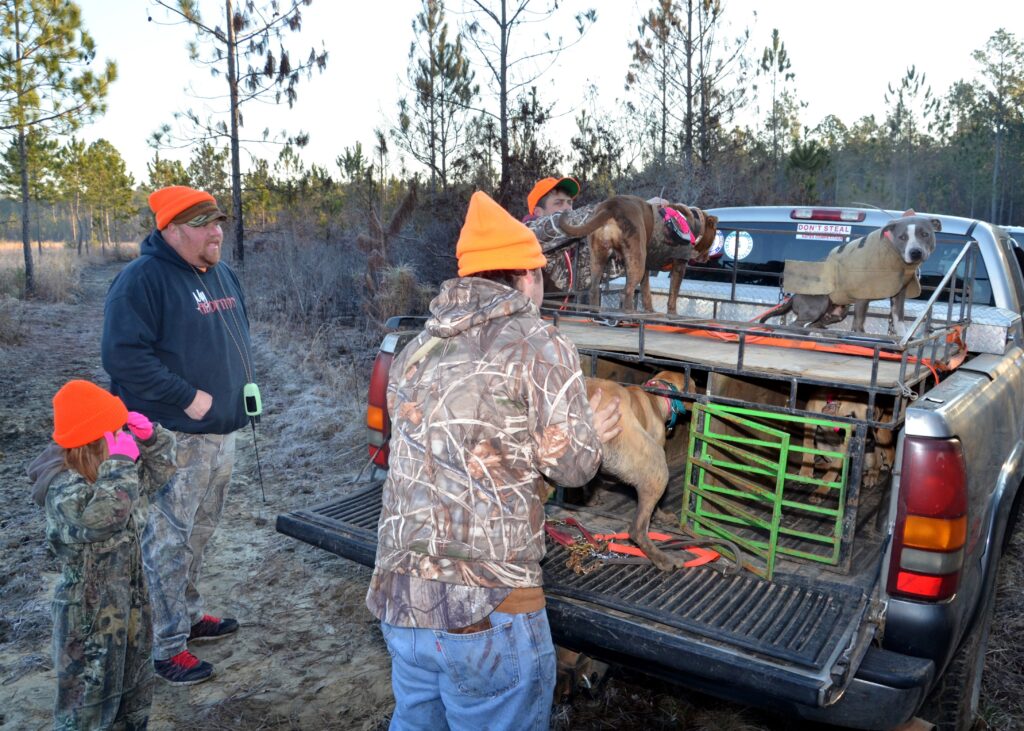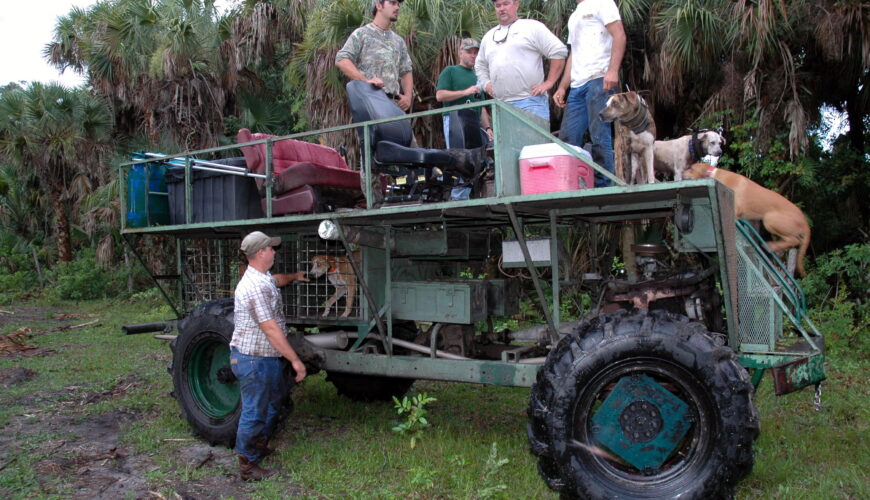Tactics
Sporting Clays Technique: How To Deal With Teal
November 24, 2025 •Mark Chesnut
March 28, 2025
Looking like a miniature aircraft carrier riding on massive tires, the swamp buggy smashed through brush and high weeds near Lake Okeechobee in south Florida. Instead of jets, this “flattop” carried a deck festooned with old automobile seats where hunters could sit in comfort. One deck below, cages contained anxious dogs.
A 250-pound feral boar burst from cover. We immediately released a few of the dogs to chase this tusked terror through briar thickets and dense underbrush.
Domestic hogs first came to North America with early European explorers. In 1539, Spanish conquistador Hernando de Soto landed near present-day Tampa. He brought a large herd of pigs to feed his troops as they meandered across what became the southeastern United States. Some pigs escaped into the wild and multiplied. Their descendants now number in the millions.
Wild swine populate every Florida county. They can survive anywhere and eat practically anything. Florida hogs prefer oak and cabbage palm hammocks, freshwater marshes and sloughs like those along the St. Johns and Apalachicola Rivers. They also live in the pine flatwoods of the Panhandle and central Florida as well as agricultural areas. Rural counties in south and central Florida probably hold the highest wild swine populations.
Feral hogs rank among the most fearsome beasts in North America. Bristling with large tusks and protected by a tough hide covering a thick “shield” of hardened scar tissue draped over its vital organs, an adult boar fears nothing. Leaner and much more muscled than barnyard pigs, wild boars can weigh more than 400 pounds, but most average between 100 and 250 pounds.

Hogs like to wallow in mud to cool off and fend off insects. Finding a wallow is promising sign hogs are nearby. Author Photo
“An adult hog doesn’t have many enemies in the woods,” commented Mike Tussey with Osceola Outdoors (239-253-5876) in Naples. “Once it reaches about six months old, not much will tangle with a healthy hog. When faced with an extremely mad 250-pound boar full of teeth and tusks, it could get ugly!”
Many sportsmen hunt hogs with dogs. Largely nocturnal, pigs habitually hunker down during the day in the lowest, thickest cover they can find, often near food sources. Pig tracks appear wider and more rounded than deer tracks. Look for places where pigs rooted up the ground or trails connecting food sources with thick cover.
Hogs frequently wallow in muck to cool off and protect their skin from bugs or intense sunshine. After wallowing, hogs commonly rub against trees, posts, telephone or powerline poles, leaving the bottoms caked in mud.
“We call trees with the bottom caked in mud hog signposts,” Tussey explained. “Big boars also cut trees to sharpen their tusks. When hogs come out of the mud, they stand under a tree rubbing against the bark scratching themselves.”
In a good spot, where there is fresh hog sign, release one to three “strike” dogs. Alternate dogs during a hunt to keep them fresh. Strike dogs sniff out the pigs and chase them, nipping the hog’s tail or back legs to make it stop. When tired or cornered, a big pig typically backs into a hole, thicket or other cover to protect its flanks and face its adversaries head on.
“A big bayed up hog is organized chaos,” remarks Josh Forbes, a hog hunter. “A big boar is more likely to fight the dogs, but a big sow will try to eat anything that threatens her offspring. I’ve seen a big sow rip a chunk of hair and meat from the back of the dog’s shoulder to the front of its back leg.”

In a good spot, where there is fresh hog sign, release one to three “strike” dogs. Alternate dogs during a hunt to keep them fresh. Author Photo
When a monster pig turns to face its pursuers, hunters send in a “catch” dog, usually a strong-jawed, scarred-up pitbull. Many hunters attach spiked collars and Kevlar vests to their dogs for protection. The catch dog grabs an ear, snout, other sensitive organ or whatever it can on the pig to immobilize the enraged beast.
After an exhilarating chase behind howling hounds and an adrenaline-pumping brawl at the bay, one or more hunters grab the pig by its hind legs. This keeps it from moving and angles the porker’s head downward to prevent it from slashing people or dogs with its tusks. With the pig held securely by people and canines, someone kills it, customarily with a large “pig-sticker” knife, to avoid injuring any humans or dogs.
Wild pigs can devastate crops, destroy gardens, ravage fruit and nut orchards and commit other destructive behaviors. According to the U.S. Department of Agriculture, feral swine cause more than $2.5 billion annually in damage to crops, livestock and pastures.

On private lands, Florida sportsmen can hunt feral hogs all year long without limit. Author Photo
On private lands, Florida sportsmen can hunt feral hogs all year long without limit. Since pigs breed so prolifically and cause so much damage, many landowners often welcome, even encourage, sportsmen to eradicate pigs on their properties.
In addition, the Sunshine State opens more than 4.4 million acres for public hunting. Regulations on public properties could differ, so always check before hunting anywhere. For more information, see myfwc.com/hunting/wild-hog.
